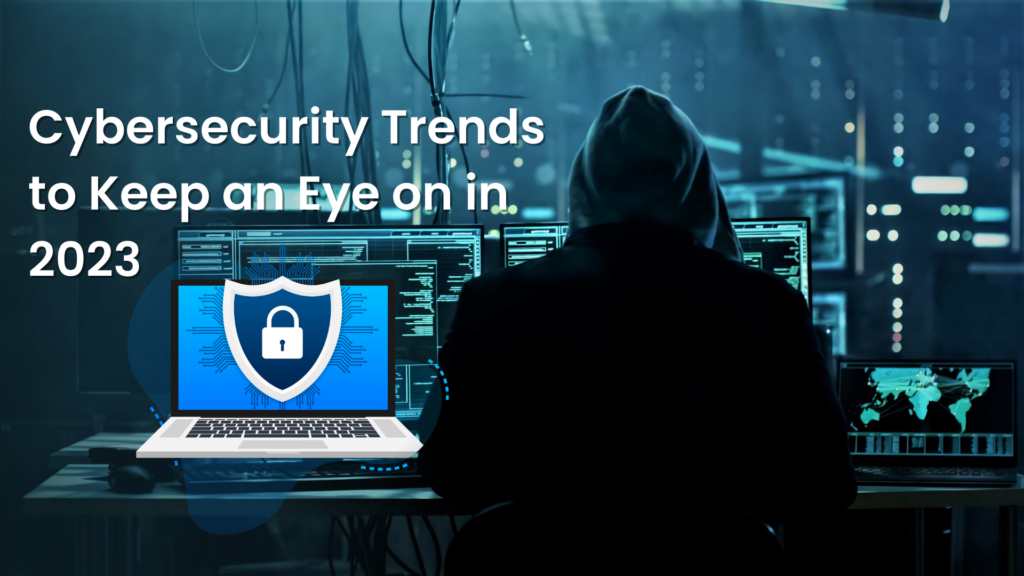cxo
UPDATES
Cybersecurity Trends to Keep an Eye on in 2023
Keeping up with cybersecurity threats has always been challenging, but today’s rate of new threats is alarming. With an expanding attack surface driven by remote working and cloud adoption, the challenges facing today’s security industry could be described as a perfect storm, given the sophistication of cyber attackers and the proliferation of security tools. This dynamic can result in disconnected insights and data, adding to the already existing shortage of security skills.

Security teams are changing how they approach threat detection and response. In order to safeguard against complex threats and navigate digital transformation safely, organisations need broad visibility, linked data, and the ability to make quick decisions.
As per the Cost of Data Breach Report 2022, the average total cost of data breaches in India has gone up more than 3X from INR 53.5 million in 2012 to INR 176.0 million in 2022. It is taking longer to identify and contain these breaches. Moreover, 5G will enable more devices to connect at fast speeds, which will increase the pressure to update security monitoring methods. AI and hybrid clouds will also scale in a way never imagined before, and cybersecurity will play a major role in this. In a country like India undergoing exponential digital transformation, these trends signal the need for organisations to strengthen their digital defences to counter the scale and severity of cyber-attacks.
For India to grow in the techade, it is the need of the hour for businesses to strengthen and continuously improve their digital defences. Here are a few cyber security trends to watch out for in 2023.
Critical Infrastructure Showing ‘Blind Trust’:
- The pandemic in essence has re-shaped critical infrastructure. In the last two years, more than ever, the world relied heavily on manufacturing – there were great hurdles to overcome to keep up on production. In fact, as per the Cost of Data Breach report 2022, over 1 in 4 critical infrastructure businesses breached suffered a ransomware or destructive attack, at a time when multiple nations’ cyber authorities are urging heightened vigilance to these sectors. Organisations need to change their approaches to conventional cybersecurity and implement a Zero Trust framework that only provides access to authentic and identifiable users.
Securing Hybrid Cloud:
- Whether the data lives on-prem, in public or private clouds, or at the edge, organisations must implement holistic security strategies to ensure data protection in 2023. Security must be considered at every step of the hybrid multi cloud journey to be successful. As part of hybrid cloud architecture, key concerns such as adapting security strategies for multi-clouds, introducing new tools and unfamiliar technologies, sharing responsibility and third party risks, an expanding threat landscape, dissolved perimeters, siloed visibility of threats, securing critical data and managing access, and increased risks of misconfigurations and compliance monitoring need to be addressed.
Quantum-safety needs to be taken seriously:
- Increasingly, enterprises will become interested in quantum-safe cryptography and security to protect their data from being tampered with, hacked, or manipulated as quantum computing becomes more sophisticated and poses potential risks, including the ability to break encryption algorithms quickly and access sensitive data.
Artificial Intelligence and Automation Are Boosting Defenders:
- According to IBM’s most recent Cost of a Data Breach Report, organisations with fully implemented security AI and automation save $3.05 million per data breach. It’s a 65.2% difference in average breach costs. An increasing number of organisations are adopting AI-powered automation to improve insights, productivity, and economies of scale in threat management. AI and automation will be a critical component of this new security landscape as we progress into India’s techade.
XDR and Zero Trust Strategies must be integrated:
- By integrating Zero Trust and XDR strategies, organisations can modernise security operations and adopt digital transformation, making security a business enabler by adapting dynamically to users, datasets, and workloads across the organisation, no matter where they are.
Attack surface management and offensive security will perform the role of a trusted adversary for customers:
- Given the exponential growth in exposure points in the hybrid cloud operating environments due to the remote and hybrid working models, the continuous discovery, inventory, classification and monitoring of an enterprise’s IT infrastructure is mission critical. In fact, ESG data suggests 67% of companies saw the external attack surface expand over the past two years with 69% of them being compromised. It is important to bring attackers’ point-of-view into the security operation centre and continuously identify external facing assets, both on-premises or in the cloud, that are visible to attackers and prioritise exposures which pose the greatest risk.
- Gain Visibility into Insider threats as it will be on rise: It is widely believed that the impact of insider threat is more expensive than external threats. The fact that it takes time to detect and contain an insider threat has severe implications on the cost of an insider threat incident.